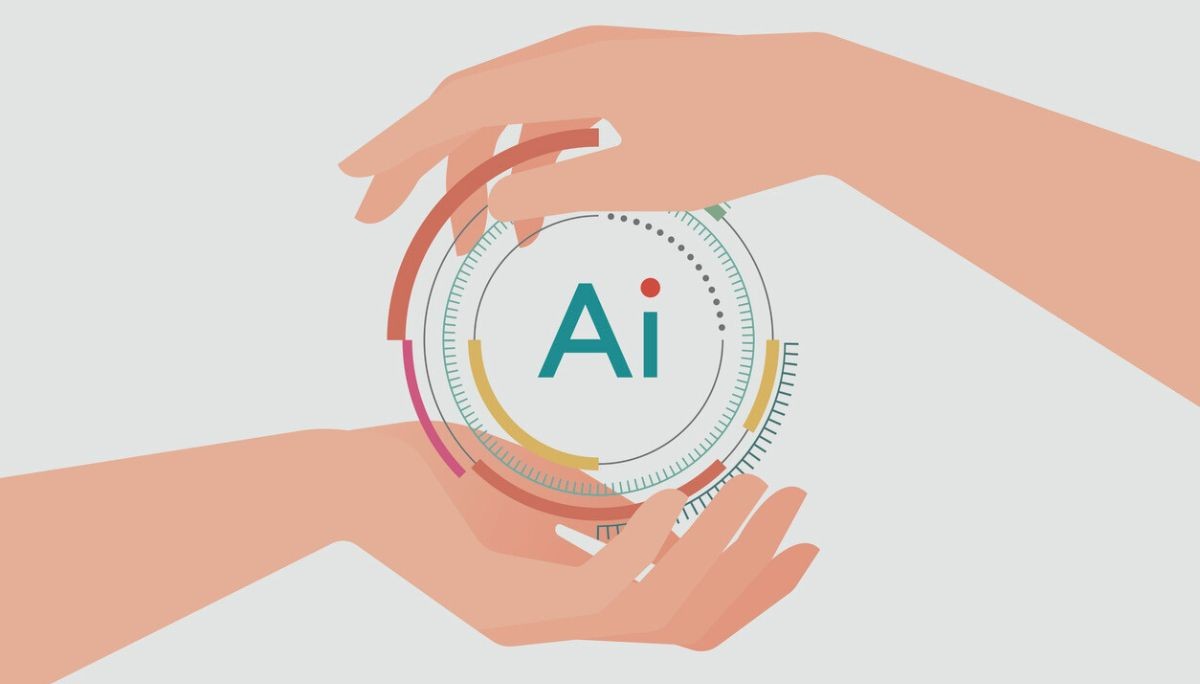What Are Pretrained AI Models? How They Work & Why They Matter
By
Liz Fujiwara
•
Jul 18, 2025
Pre-trained models offer a head start in machine learning by leveraging already trained models on large datasets. They save time and resources, and they enable developers to achieve high accuracy with less data and effort. In this article, we’ll explore what pre-trained models are, how they work, and why they are transformative for AI and machine learning applications.
Key Takeaways
Pre-trained AI models significantly expedite machine learning development by providing foundational knowledge and reducing the need for extensive datasets.
Key applications of pre-trained models span across various sectors, including healthcare, finance, and customer service, enhancing efficiency and performance.
Despite their advantages, pre-trained models pose challenges related to bias, privacy, and complexity, requiring careful selection and fine-tuning to ensure effectiveness and accountability.
Understanding Pre-Trained AI Models

Pre-trained AI models offer a shortcut to creating capable models for various tasks. Understanding their significance and functionality is essential. Pre-trained models are a driving force in many machine learning applications, significantly reshaping the landscape of AI development.
Common neural network architectures used for pre-training include transformers for natural language processing (NLP) and convolutional neural networks for computer vision. These architectures form the backbone of highly accurate models that can be fine-tuned to train for specific tasks.
Let’s delve deeper into what pre-trained models are, how they work, and why transfer learning is so important.
What Are Pre-Trained AI Models?
Pre-trained AI models are machine learning models trained on large datasets that can be fine-tuned for specific tasks. These models serve as a starting point for developing machine learning applications, providing initial model weights and biases that have already been learned from vast amounts of data. Pre-trained models come in various types. These include language models, image classification models, and object detection models.
Neural network architectures trained through pre-training and fine-tuning are considered pre-trained AI models. These models are experts in their fields due to extensive training on large datasets, enabling them to adapt to specific tasks efficiently. Utilizing pre-trained models allows developers to improve the effectiveness of their AI applications.
How Do Pre-Trained AI Models Work?
Pre-training enables models to learn from diverse data sources, creating a base for specialized downstream tasks. Models analyze vast datasets to understand intricate patterns and gain general domain knowledge, like language structures or visual features. This development process typically involves using unstructured and unlabeled data.
Fine-tuning a pre-trained model serves to adapt the model for a specific task using a smaller, task-specific dataset. This allows the model to utilize its pre-trained understanding for accurate performance on a particular task. Fine-tuned models can adapt to specific language and data characteristics, enhancing their relevance.
The Importance of Transfer Learning
Transfer learning enables pre-trained models to adapt to new tasks using previously acquired knowledge. Leveraging this knowledge, models achieve high accuracy with minimal additional data, boosting efficiency and value in various AI applications, including deep learning style transfer.
Popular Pre-Trained Models in 2025

Pre-trained models are significantly reshaping the machine learning field, providing robust solutions across various tasks. Popular models in 2025 include generative models for enterprise applications and large language models for natural language processing. NVIDIA, for example, has developed groundbreaking generative AI models and a vast collection of over 600 domain-specific pre-trained models. The ONNX team encourages users to contribute their models to the growing model zoo, enhancing the collaborative development of pre-trained models.
These ML models deliver state-of-the-art performance and are easily accessible for developers. Here are some notable pre-trained models in language, computer vision, and speech recognition.
Language Models
Language models are essential for understanding and generating human language in various natural language processing tasks. Google’s BERT is a widely-used language model that has significantly improved NLP task performance through its language understanding of next word context.
The ELECTRA-Based Model is another notable model, using a novel pretraining method for efficient training with a smaller version size and faster time compared to similar models. BioBERT is specifically designed for the biomedical field, aiding in clinical research and text mining related to healthcare. It enhances understanding in the biomedical domain, enabling researchers to extract meaningful insights from clinical texts.
Machine translation models excel at translating input text into another language, showcasing their utility in global communication. Language models like BERT and ELECTRA help achieve high accuracy across a wide range of complexities in application development. Text summarization models, on the other hand, are designed to reduce lengthy documents into concise summaries, making information more digestible.
Computer Vision Models
Computer vision models are essential for tasks such as image classification, object detection, and semantic segmentation in embedded vision applications. Image classification models categorize images into specific classes, enabling highly efficient object recognition tasks. Real time object detection models identify and localize multiple objects within an image, providing information such as category names and confidence scores.
Semantic segmentation models label every pixel in an image into distinct categories, allowing for detailed analysis of scene components. Specialized detection models, such as PeopleNet and face detection models, serve specific purposes like pedestrian tracking and emotion recognition. These models are pivotal in applications ranging from autonomous vehicles to medical imaging analysis.
Speech Recognition Models
Automatic Speech Recognition (ASR) models convert spoken language into text, significantly enhancing user interaction in voice-activated systems. The ECAPA TDNN is a time delay neural network model that is highly effective in ASR tasks involving sequential data. These models are crucial for applications like virtual assistants and transcription services.
Benefits of Using Pre-Trained Models

Pre-trained AI models greatly reduce the time and computational resources required to develop effective machine learning solutions. Leveraging knowledge from large datasets allows developers to bypass data collection challenges and rapidly create powerful AI applications, cutting training time from several months to just a few weeks.
Pre-trained models provide a robust foundation for further customization through transfer learning. Organizations can achieve better performance with less data, making these models especially valuable in specialized fields where obtaining labeled data is challenging. Additionally, pre-trained models can be fine-tuned for specific tasks, enhancing their effectiveness in various industries.
These new models facilitate access to advanced AI capabilities for a broader audience, breaking down barriers for developers with limited resources. By using pre-trained models, developers can save time and resources while achieving improved performance in their AI projects with open source models.
Challenges and Considerations
Despite their advantages, pre-trained models present challenges. Bias can emerge if training data reflects societal prejudices, leading to unfair treatment of certain groups. Privacy issues may arise when models are trained on sensitive data, increasing the risk of exposing personal information.
The complexity of many machine learning models makes them hard to interpret, raising concerns about trust and accountability. Balancing fairness, interpretability, and privacy is a significant challenge due to their interrelated nature.
Additionally, model selection is complicated by the vast number of available pre-trained models, each with different capabilities and weaknesses.
Practical Applications of Pre-Trained Models

Pre-trained models drive innovation and efficiency across industries, offering significant performance gains. In healthcare, they help analyze medical images for disease detection. Manufacturing industries use them for predictive maintenance, reducing equipment failures.
The finance sector uses pre-trained models for tasks like fraud detection and analyzing market trends. In customer service, pre-trained models improve chatbot efficiency by understanding complex queries. These models facilitate various applications, including natural language processing and computer vision.
Getting Started with Pre-Trained Models

Selecting the right platforms and tools is key to getting started with pre-trained models. NVIDIA’s TAO platform helps create production-ready models, optimized for various environments like GPUs, cloud, embedded, and edge. TensorFlow pre-trained models offer a quick start with comprehensive documentation and code examples.
Downloaded models can be run on Windows machines, especially with RTX GPUs for enhanced performance. Pre-trained models can be deployed in Amazon SageMaker. This can be done using Jupyter Notebooks, the SageMaker SDK, or the AWS CLI.
The AI Playground lets users try generative AI models, test with their own datasets, and adjust hyperparameters.
Choosing the Right Framework
Selecting the right framework is crucial for efficiently working with pre-trained models. Using established frameworks like PyTorch or TensorFlow provides a strong foundation of robustness and community support for developers. Hugging Face Transformers is a widely used framework for natural language processing with pre-trained models.
The choice of framework should align with the specific requirements of your machine learning project.
Exploring Model Repositories
Model repositories serve as centralized locations where developers can find and access pre-trained models for various machine learning tasks. The ONNX Model Zoo is a collection of pre-trained, state-of-the-art models preserving pre-trained model history.
AWS Marketplace offers a variety of pre-trained models specializing in tasks such as object detection and natural language processing.
Fine-Tuning Your Model
Fine-tuning a pre-trained model typically involves:
Using a smaller, task-specific dataset with labeled examples.
Fine-tuning models in frameworks like TensorFlow and PyTorch for specific datasets.
Understanding the model’s architecture beforehand to ensure better performance.
Fine-tuning personalized content personalizes the model to specific needs, enhancing its accuracy and relevance to the application. This process is a powerful tool for developers, enabling the creation of highly accurate models tailored to specific tasks. To fine tune it effectively, developers must consider the unique requirements of each application.
Fonzi: Revolutionizing AI Hiring
Fonzi is a curated AI engineering talent marketplace that connects companies to top-tier, pre-vetted AI engineers through its recurring hiring event, Match Day. Fonzi delivers high-signal, structured evaluations with built-in fraud detection and bias auditing, unlike black-box AI tools or traditional job boards.
Let’s explore how Fonzi works and why it is helpful in AI hiring.
How Fonzi Works
Fonzi’s hiring strategy includes a Match Day event with the following features:
Candidates receive multiple job offers from vetted employers based on a single profile.
Companies can make real-time offers to candidates within a 48-hour timeframe.
Match Days are conducted monthly.
Candidates can receive salary-backed offers from companies during the 48-hour window.
Candidates undergo a simplified application process and a recruiter call to align their qualifications with available roles. The platform features an automated screening system and bias-audited evaluations to ensure a fair and efficient hiring process.
Fonzi supports both early-stage startups and large enterprises, accommodating hiring from the first AI hire to the 10,000th hire.
Why Choose Fonzi?
Fonzi offers the following advantages:
Expedites the hiring timeline, enabling companies to complete hires in as little as three weeks.
Significantly reduces the time-to-hire, with most hiring decisions made in under three weeks.
Guarantees high-quality candidates by matching them with specific job requirements and long-term career goals.
The platform delivers high-signal, structured evaluations with built-in fraud detection and bias auditing, preserving and elevating the candidate experience. This ensures engaged, well-matched talent, making Fonzi a reliable choice for AI hiring.
Summary
Pre-trained models have revolutionized the field of machine learning, providing highly efficient and effective solutions across various applications. By understanding what pre-trained models are and how they work, developers can leverage these powerful tools to create advanced AI applications quickly and with fewer resources. The importance of transfer learning further underscores the value of pre-trained models, enabling them to adapt to new tasks with minimal additional data.
As we navigate through the diverse landscape of pre-trained models in 2025, it’s clear that their impact is profound and far-reaching. From language models like BERT and BioBERT to computer vision models and speech recognition systems, these models are driving innovation in fields ranging from healthcare to finance. With platforms like Fonzi revolutionizing AI hiring, the future of AI development looks promising and accessible to all.




